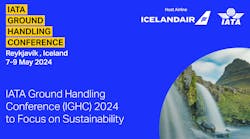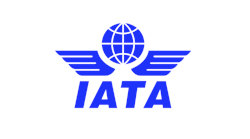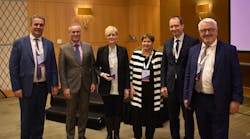When it comes to training, is it really technology or people we should be concerned about?
Training has always been the backbone of the aviation and aerospace industries, technical training that is. When it comes to core human interaction skills training, or “soft skills training” as many aviation professionals call it, the industry lags behind other service providers such as the hotel and restaurant industries.
The business world (across the industries) continues on the path of technological advancement. The pace is fast and furious. Everywhere we look, there are rapidly occurring improvements. This is just as evident in aerospace and aircraft technology. However, are we ultimately forgetting that people are the targeted beneficiary of these wonderful advancements in technology? After all, we the people should be reaping the benefits of these remarkable technical achievements; but are we? Are we able to keep up with the pace of change in technological advances while maintaining our interactions with people?
ServiceElements came onto the scene in 2003 after its founders recognized that a need was not being served in business and general aviation. Aviation professionals were getting all the technical and procedural recurrent training that they needed to keep flying, fueling, maintaining, dispatching, and serving business aircraft and their passengers. However, many of the aircraft passengers and principals at flight departments, FBOs, maintenance shops, aircraft manufacturers, charter companies, fractionals, etc. drove the demand for improved service and communication skills from the aviation professionals. Soon it became evident that human factors are also an important element in air safety and service. Aviation professionals had the technical and procedural knowledge when it came to the operation of aircraft, but they struggled when it came to dealing with passengers, customers, and their own team members. These “people issues” are the cause for much conflict, drama, and safety challenges in the workplace.
People Issues
Communication is imperative in any service organization or any human relationship. Effective communication is not only active listening or the ability to articulate well. Communication is successful when the person sending the communication and the person(s) receiving it come to a mutual understanding. In order for the service interaction to be successful, the expectations of both internal and external customers must be understood and met — at the very least — or exceeded. Maintenance professionals will sometimes say, “I don’t deal with the customers. I just fix airplanes.” However, this is not the case anymore. Everyone has customers to deal with — whether the customers are external customers or internal team members. Communication and interaction skills between both internal and external customers are essential to a successful service organization or company, to a successful team, and to successful individuals.
The fact that we are losing a lot of great experience in the industry is further complicating the human interaction challenges. The vacuum is slowly being filled with new people with very little experience in the industry. In the meantime, the industry is also grappling with new and old technologies still in operation.
One suggestion is to really pay attention to these people issues in our operations. Pilots, aircraft technicians, schedulers and dispatchers, flight attendants, and others in our organizations do require a broad approach to keeping up with the technology. Not just how to use technology, but aviation professionals need to be able to understand its benefits and impact on our respective jobs and functions. We may need some new positions or we may need to add a genuine focus to the organizational people resource management part of our day-to-day activities.
Ultimately, we are reiterating what many people have begun to recognize. What we are reinforcing is we need to accelerate the focus on human and people issues. This may require us to change our thinking and approach to people development and to culture shift in our industry. One simple notion or cultural shift can be: consider safety our No. 1 and the most important service. Achieving this goal or transition will help us to never allow safety or service to be mutually exclusive. It is not one or the other. Safety is the No. 1 service. Sometimes we need to just explain, communicate, and project the real purpose of and goals of our work. This will drive us to develop people and our teams to have better responses to overall customer safety vs. customer requests and expectations.




